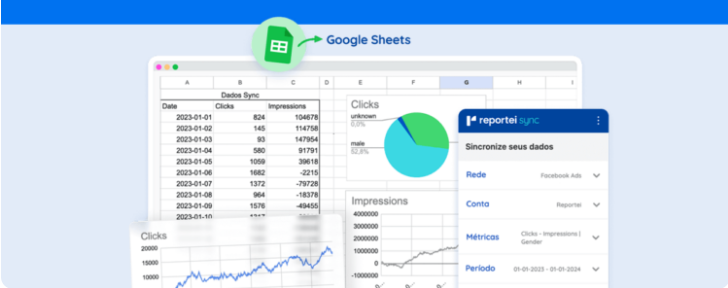Understand the importance of analyzing your CRM data and insights for doing this efficiently in your company
Full of valuable information, Customer Relationship Management (CRM) systems go far beyond data storage and task organization, offering tools that enable intelligent analysis by the sales team, strategic insights, and data-driven decisions to improve results.
Therefore, in this article, we’ll explore how CRM data analysis has become a fundamental pillar for boosting operational efficiency, customer satisfaction, and, of course, business development.
From tracking the history of interactions with leads to forecasting future trends, we’ll uncover best practices that empower companies to go beyond in their sales strategies. Shall we?
Why is it important to analyze CRM data?
CRM data analysis plays a critical role in a company’s ability to make informed and strategic decisions. Among its key advantages, it’s worth highlighting:
- Deep understanding of customers, including purchase history, preferences, browsing behaviors, previous interactions, and more;
- Personalization of messages, offers, and experiences for each customer, increasing engagement with the organization;
- Anticipation of needs, allowing companies to adjust their inventories, develop products that meet expectations, and ensure services are aligned with market trends;
- Efficient segmentation of the base using different demographic and geographic criteria;
- Churn reduction, as CRM data analysis helps identify signs of at-risk customers and allows for proactive interventions to retain them;
- Competitive advantage through forecasting trends, quickly adapting to market changes, and delivering exceptional customer experiences. In summary, CRM data analysis allows companies to understand their customers on a deeper level, effectively direct strategies, anticipate needs, and continually adjust their approaches for sustained success in business.
How to Analyze CRM Data More Efficiently?
To truly benefit from the advantages that CRM offers, you must utilize its tools comprehensively and perform efficient data analysis. Below are some crucial tips that can assist in this process. Read on!
Customer Segmentation and Personalization
Today’s generic approach for all leads is no longer effective, making personalization the key to capturing attention and securing customer loyalty.
In this regard, CRM data analysis plays a pivotal role, enabling companies to intelligently segment their contact base and provide personalized experiences that align with individual needs and desires.
Various criteria can be considered for this, such as demographics, purchase history, browsing behavior, and geographical location, allowing businesses to better understand their audiences and adapt strategies accordingly.
This enables the creation of personalized experiences for each customer, from individualized email greetings to product recommendations.
When customers realize they are understood and addressed on an individual level, they are likely to engage more with the brand. This can result in greater loyalty, satisfaction, and subsequently, retention.
Performance Metrics and KPIs
CRM report analysis is crucial not only for understanding customers but also for evaluating and improving business strategies through performance metrics and Key Performance Indicators (KPIs).
Before starting the analysis, it is essential to define the sales KPIs most relevant for achieving business objectives. These metrics may include conversion rates, average purchase value, customer retention, and other indicators aligned with the goals.
Next, it’s important to establish a routine to monitor this information and integrate the results with marketing, enabling the development of strategies that encompass actions from the top to the bottom of the funnel.
Trend and Pattern Analysis
In a constantly changing market, the ability to predict trends and identify patterns has become a high-value competitive edge. This is where CRM data analysis comes into play, allowing insights that guide future actions.
By examining historical data, such as purchase patterns and customer interactions, seasonal fluctuations, behavioral shifts, and even emerging trends can be identified. For example, a retail company could find that demand for certain products rises at particular times of the year and prepare for this increased demand.
Additionally, CRM reports enable proactive rather than reactive action, anticipating changes and adjusting strategies in advance. This gives a competitive edge as the company is one step ahead of market transformations.
Customer Retention and Recovery
For companies, retaining satisfied customers and recovering those who have drifted away are critical goals. In this landscape, CRM data analysis acts as a powerful tool for optimizing strategies by:
- Proactively identifying behaviors that indicate a customer may leave. By observing interaction and purchasing patterns, interventions can be made before the relationship deteriorates further;
- Personalizing offers and communications to further value the customers;
- Reactivating inactive customers by understanding past purchasing trends and individual preferences to win them back;
- Anticipating needs with solution offers before customers even express their demands. This not only strengthens the relationship but also enhances satisfaction;
- Analyzing feedback and dissatisfaction to solve problems and improve customer experience, showing a genuine commitment to satisfaction;
- Monitoring indicators like retention rates and increased customer activity to evaluate the effectiveness of strategies and adapt them as needed.
Continuous Improvement of Sales Strategies
Along with all of this, CRM data analysis provides valuable information for improving sales strategies. By identifying friction points in the purchase experience, companies can adjust their approaches, thereby improving customer satisfaction and sales effectiveness.
Through testing and experimentation, it’s possible to discover which sales approaches are most effective, tactics that result in higher conversion rates, pricing more in line with the target audience, among other efficient actions.
Another benefit is enabling companies to respond quickly to market changes. By monitoring sales metrics in real-time, there is the advantage of adapting strategies according to shifts in customer demands.
Which Tool to Use for Analyzing CRM Data?
Within the CRM itself, you can access all the necessary sales and customer relationship data to gain the insights listed above.
However, to go beyond and perform a comprehensive, integrated assessment with marketing strategies, you can rely on reporting automation tools like Reportei!
In seconds, our platform captures all the essential metrics from major CRM tools on the market, allowing you to create customized reports and dashboards for your needs. Below are the available integrations:
- RD CRM: provides information on all tasks performed by the team, business opportunities, and sales progression;
- Hubspot CRM: offers a comprehensive performance analysis of the sales funnel, from opportunity arrival to deal closure, displaying all customer touchpoints;
- Pipedrive: gives a more complete view of the negotiation process with leads and activities carried out by sales reps. Moreover, all this data can be evaluated in conjunction with other channels included in your strategy, like marketing automation platforms, SEO, paid campaign management, and social media.
Take advantage of our free 3-day trial and discover how to make your CRM data analyses more efficient with Reportei!



